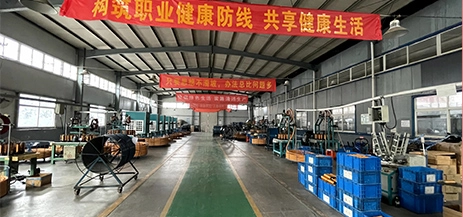how to patch a power steering hose
How to Patch a Power Steering Hose
A power steering hose is an essential component of your vehicle's steering system, transporting hydraulic fluid to help make steering easier. Over time, these hoses can develop leaks due to wear and tear, exposure to high temperatures, or physical damage. If you find a leak in your power steering hose, it’s important to patch it promptly to prevent further damage to your steering system. Here’s a step-by-step guide on how to patch a power steering hose effectively.
Step 1 Identify the Leak
Before you can patch a power steering hose, you need to locate the leak. Park your car on a flat surface and turn off the engine. Inspect the hose for any visible signs of damage, such as cracks, pinholes, or wet spots where fluid might be leaking. You can also check the power steering fluid reservoir to see if the fluid level is low.
Step 2 Gather Your Materials
To patch the hose, you will need a few materials a clean cloth, hose clamps, a rubber patch or a piece of rubber tubing, and some strong adhesive or hose repair tape. Ensure that you have safety gloves on to protect your hands from any residual fluid.
Step 3 Prepare the Area
Clean the damaged area of the hose thoroughly using a clean cloth to remove any dirt or old fluid. This will help create a better bond for the adhesive or tape.
Step 4 Apply the Patch
how to patch a power steering hose

If using a rubber patch, cut it to size, making sure it covers the damaged area completely. Apply the strong adhesive to both the hose and the patch, then firmly press the patch onto the hose. For hose repair tape, wrap the tape tightly around the damaged area, ensuring that it's layered evenly to create a solid seal.
Step 5 Secure the Patch
To reinforce the patch, use hose clamps on either side of the damaged area. This will help hold the patch in place and prevent any further movement that could cause a leak.
Step 6 Refill Power Steering Fluid
After patching the hose, check and refill the power steering fluid if necessary. Start your vehicle and turn the steering wheel side to side to help circulate the fluid through the system.
Step 7 Test for Leaks
Finally, monitor the patched hose for any signs of leakage. It's advisable to check it after a short drive. If the patch holds, you’ve successfully repaired your power steering hose.
While patching a power steering hose can be a temporary solution, it’s essential to consider replacing the hose entirely if potential damage arises. Always consult a professional if you're unsure about any step in the repair process.
-
Ultimate Spiral Protection for Hoses & CablesNewsJun.26,2025
-
The Ultimate Quick-Connect Solutions for Every NeedNewsJun.26,2025
-
SAE J1401 Brake Hose: Reliable Choice for Safe BrakingNewsJun.26,2025
-
Reliable J2064 A/C Hoses for Real-World Cooling NeedsNewsJun.26,2025
-
Heavy-Duty Sewer Jetting Hoses Built to LastNewsJun.26,2025
-
Fix Power Steering Tube Leaks Fast – Durable & Affordable SolutionNewsJun.26,2025

